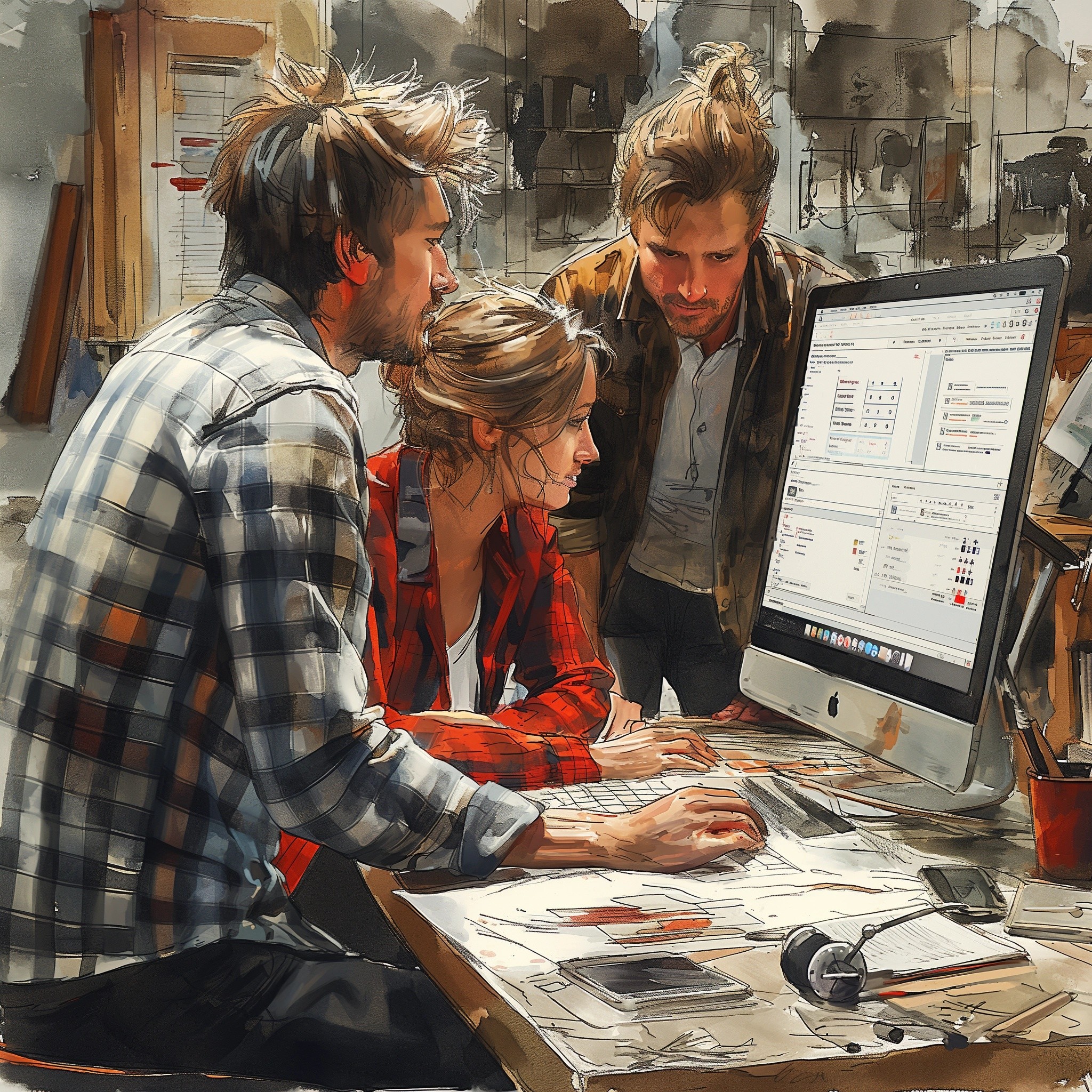Understanding the Difference Between a Component Library and Design Systems
Oct 28, 2024
In the fast-evolving world of digital product design, terms like “design system” and “component library” are thrown around quite frequently. Designers, especially those early in their career, often mistake one for the other, using "component library" and "design system" interchangeably. This confusion can cause misunderstandings when collaborating with developers or scaling products.
In this article, we’ll clear up the distinction between a component library and a design system, explain how the two are connected, and offer some insight into how designers and developers can work together to create the best possible outcomes. We'll also look at how major companies like Airbnb and Shopify have gone on record to explain how their teams collaborate to build robust design systems that stand the test of time.
Designers Often Confuse Component Libraries with Design Systems
Let’s address the elephant in the room right away: many designers mistakenly think a component library is the same thing as a design system. It's an easy mistake to make, but it’s crucial to get the difference right because understanding it will improve your workflow, make collaboration smoother, and ultimately result in a better product.
A component library, usually built in design tools like Figma, Sketch, or Adobe XD, is a set of reusable design elements—think buttons, input fields, modals, and navigation bars. These components ensure consistency in the design and can be easily reused across different parts of a project. However, a component library does not cover how these components should be implemented in code or how they behave in specific contexts.
A design system, on the other hand, is much more comprehensive. It not only includes the design assets found in a component library but also covers the coding elements, interaction guidelines, accessibility rules, and design principles. A design system is a living, breathing ecosystem that both designers and developers rely on to create cohesive, user-friendly products.
What Exactly Is a Design System?
A design system is not just a set of design files—it’s an ecosystem that combines design and development to ensure a unified, consistent product experience. Think of it as a holistic framework that helps bridge the gap between design and development. While a component library gives designers the building blocks to craft a UI, a design system includes the guidelines, coding standards, and documentation that ensure these components are implemented correctly and behave as expected across various platforms.
A well-constructed design system should include:
Design assets: The visual elements (buttons, forms, colours, etc.) that designers use to create interfaces.
Code components: The developer-friendly versions of these assets (often built in HTML, CSS, JavaScript, React, etc.), ready to be deployed into the product.
Interaction guidelines: How components behave under different conditions, such as hover states, click events, or responsive layouts.
Accessibility standards: Ensuring that components are usable for everyone, including people with disabilities.
Best practices and principles: Rules that dictate how and when to use certain components to maintain brand integrity and consistency.
The Connection Between Component Libraries and Design Systems
It’s important to understand that component libraries and design systems are not mutually exclusive; in fact, a component library is a subset of a design system. If you think of a design system as a toolkit for building digital products, then the component library is one of the key tools in that kit.
For example, in Figma, you might create a button component that comes in different styles (primary, secondary, outlined, etc.). While this is incredibly useful for keeping the visual design consistent, it doesn’t tell a developer how that button should function in the code, or how it should behave when clicked or hovered over. That’s where the design system comes into play—it will not only describe how the button looks but will also document its behaviour and accessibility standards in code.
How Designers and Developers Can Collaborate for Success
For a design system to truly work, it’s essential that designers and developers collaborate effectively. One of the biggest challenges teams face is the lack of communication between these two disciplines. Too often, a beautiful design component is created in Figma, but when it gets handed over to the developers, things start to break down: the button doesn’t behave as intended, or the spacing is off, or the component doesn’t work in all browsers.
To avoid this, there are a few best practices that can help teams work together:
Involve Developers Early: Designers should include developers in the design process from the start. This ensures that any components created in the design phase are feasible to implement in code. It also allows developers to flag potential issues early on, such as performance concerns or technical constraints.
Use Shared Documentation: A design system should include detailed documentation that both designers and developers can reference. Tools like Storybook or ZeroHeight can help teams create interactive design systems that allow everyone to see both the design and the code in one place.
Bridge the Gap with Tools: Tools like Figma’s Inspect feature or Zeplin help bridge the gap between design and development. These tools allow developers to see the exact specifications of each component—spacing, colour values, typography, and more—so there’s no guesswork involved when translating the design to code.
Regular Check-Ins: As with any project, regular communication is key. Designers and developers should meet regularly to discuss any challenges or updates to the design system, ensuring that everyone is on the same page.
Real-World Examples of Design System Collaboration
Several large companies have shared how their designers and developers collaborate to create and maintain successful design systems.
Airbnb:
Airbnb is well-known for its design-forward approach, and its design system, “Design Language System” (DLS), is a model of collaboration between designers and developers. According to Airbnb, DLS was built with both disciplines in mind from the start, ensuring that the same components used in Figma were faithfully recreated in code. This allowed the company to create a cohesive brand experience across their platform while still enabling flexibility for different product teams to adapt the system to their needs.
Shopify:
Shopify’s design system, Polaris, is another great example. Shopify has been open about the collaboration between its design and development teams in creating Polaris. They’ve emphasised how their component library in Figma is linked to code, and how thorough documentation has been key to scaling their product. Developers and designers both use Polaris to ensure that new features maintain the brand’s consistency and meet high standards for performance and accessibility.
IBM:
IBM’s design system, Carbon, is a standout example of how a cross-functional team can build something that lasts. IBM has detailed how they treat their design system like a product in itself, involving not just designers and developers, but also content creators, accessibility experts, and product managers. This multi-disciplinary approach ensures that Carbon is robust, flexible, and future-proof, serving a company with such a vast product offering.
Conclusion
In summary, it’s crucial for designers to understand the difference between a component library and a design system. While the component library provides the visual building blocks, the design system is the full blueprint, combining design and code to ensure a cohesive, scalable, and user-friendly product.
For the best possible outcome, collaboration between designers and developers is key. By involving developers early, using shared documentation, and leveraging the right tools, teams can ensure that their design systems are not only beautiful but also functional and maintainable.
Companies like Airbnb, Shopify, and IBM have shown us that when done right, a design system can be a powerful tool for scaling digital products efficiently, consistently, and beautifully.
So next time you’re building a new product or improving an existing one, remember: the component library is just one piece of the puzzle. To create something truly great, you’ll need a full design system—one that both designers and developers can get behind.





